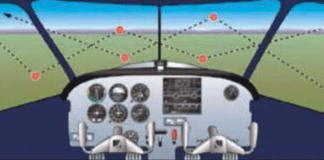As in the article, many airports are one approach at a time, either due to the nature of the approach, the terrain or radar coverage. In these cases, it’s considered courteous to cancel IFR as soon as you can so that anybody waiting behind you can begin their approach.
To paraphrase a famous quote from Albert Einstein about keeping things simple, you should cancel as soon as possible—but no sooner.
As an instrument pilot you may have forgotten the cloud clearance and visibility requirements for VMC. That’s not surprising. If you always fly IFR, what do you need with that cluttering up your brain?
Well, that’s fine if you never cancel and just leave the flight plan open until you close it on the ground after landing. But, that’s not very courteous. If you cancel in the air as soon as you can proceed visually, there’s a risk that has bitten many seasoned pilots.
You’re either in IMC requiring IFR, or VMC. There is no middle ground. So, if you cancel IFR, make sure you have VFR cloud clearance and visibility (14 CFR 91.155), which are typically 500 feet below the clouds and 2000 feet horizontally, with at least 3 miles visibility. Without that in controlled airspace, you’re not in VMC and you still must be on an IFR flight plan.
Be nice, but be legal first.
—FB




